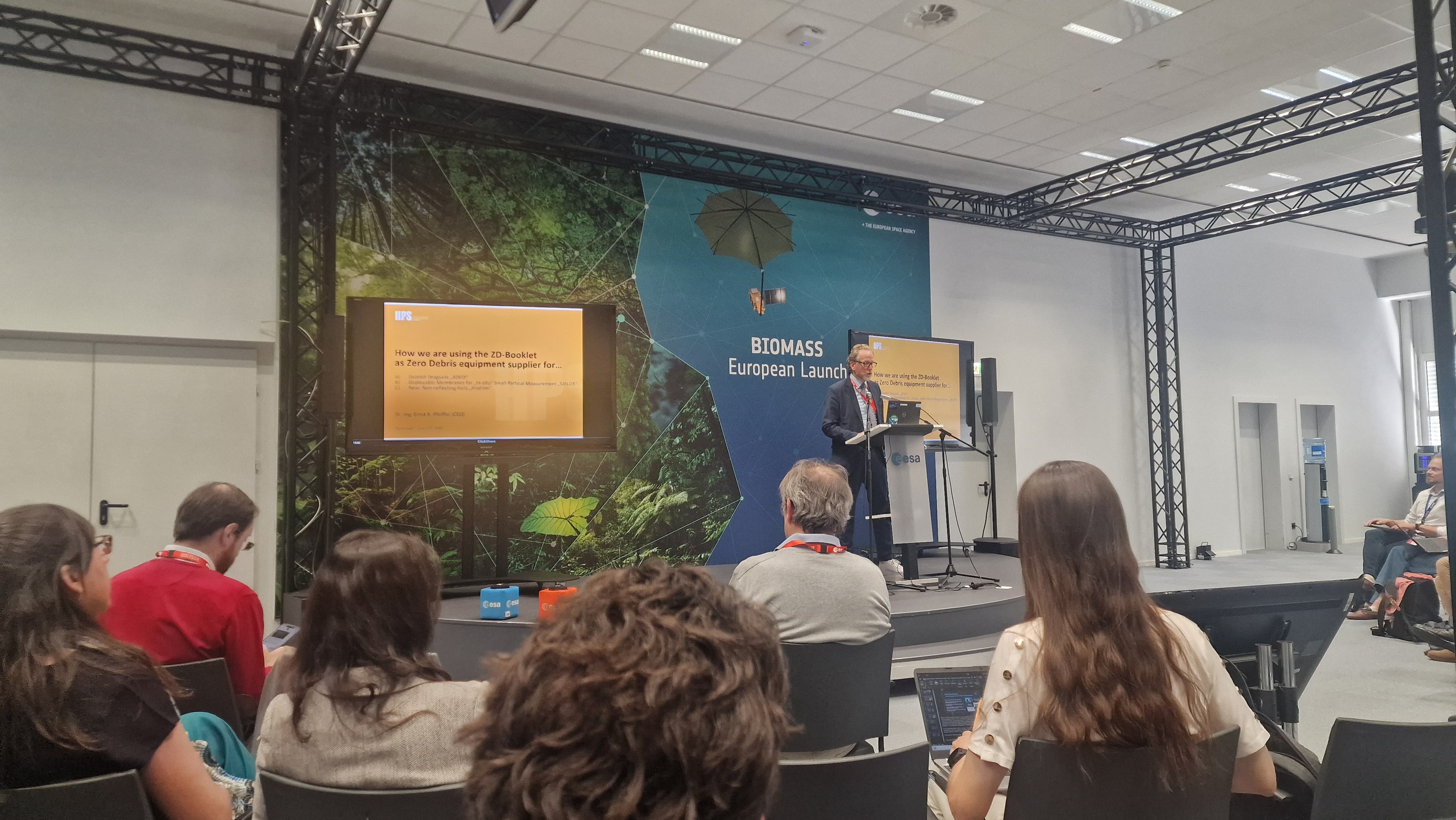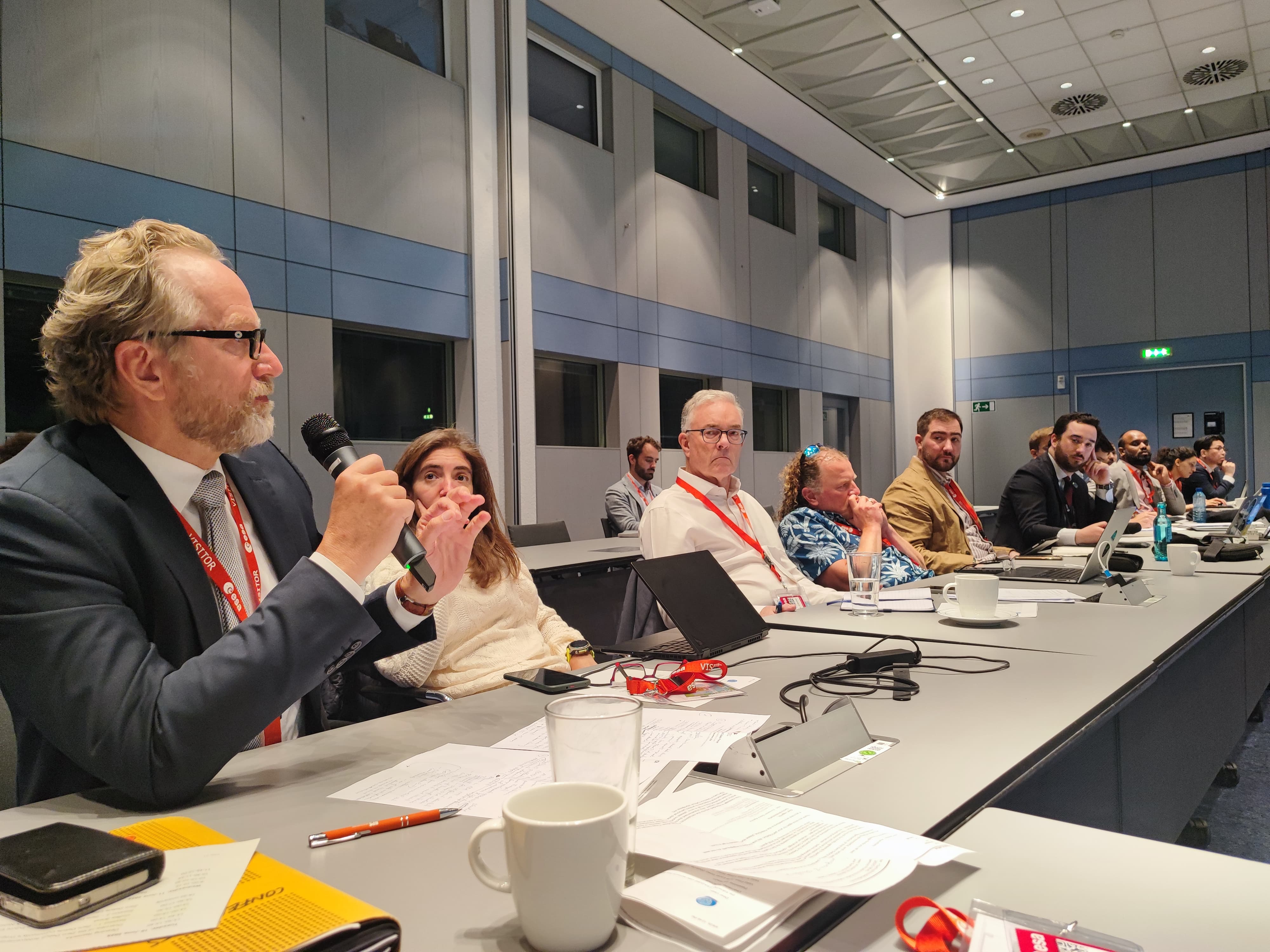Ernst K. Pfeiffer: Summary of the Zero Debris Symposium and Workshop
June 2025
Great: the Zero-Debris Symposium and Workshop on the Zero-Debris Booklet brought a full house to ESA’s European Space Operation Center from June 10 to 12. The program covered all relevant aspects of the topic with slots for exchanging experiences on developments over the last 12 months, panel discussions such as “Zero Debris Progress & Challenges” and presentations such as the one by HPS CEO Ernst K. Pfeiffer on “How we work with the Zero Debris Booklet”. HPS High Performance Space Structure Systems GmbH is one of the central suppliers in this “clean space” sector – but not only that: it is also one of the driving industrial forces when it comes to making space travel sustainable. To this end, the company has been investing heavily in corresponding technologies for over ten years and today covers the demand for towing sail modules (ADEO), is working on deployable membranes for the in-situ measurement of small debris (SAILOR) and has recently developed non-reflective films (ProFilm) for “dark skies”. At the end of the event, Pfeiffer summarized his summary in the following positions:
- The Zero Debris Charter and the 5-year deorbit rule introduced by ESA for all its new missions is important for strategic planning in companies and motivates further investment in corresponding technology developments.
- The mindset of satellite manufacturers and operators with regard to deorbit approaches has changed fundamentally over the past 18 months, with more and more satellite manufacturers turning to hybrid and redundant solutions.
- In the early phases of national and ESA missions, a specific trade-off between different deorbit technologies should be performed; the recommended trade-off criteria should be part of the Zero Debris Booklet.
- To promote the goals of the Zero Debris Community in Europe and worldwide, simple KPI graphs should visualize the – hopefully positive – development of the debris situation, such as the average deorbit time, the number of satellites lost due to anomalies (according to NASA, it is currently more than 40% of small sats!) and the number of collision maneuvres.
- An anchor customer for suppliers of zero-debris equipment or vouchers for satellite builders for on-board zero-debris technology should be part of the CMin25 program (e.g. 10 MioEUR/year, in packages of 100k)
- A redefinition of “end-of-life”, “end-of-mission”, “end-of-business” needs to be made now if deorbit time to complete demise is to be part of the mission today; the definition needs to be crystal clear in potential future courts.
- It is time to study the effects of the exhaust gases produced by thousands of propellant-based deorbit maneuvers that could affect high-resolution optical Earth observation missions (including military ones) in 5-10 years.
- A step-by-step approach with a gradual implementation of small zero-debris targets is better than endless discussions about perfect regulations and technologies with the requirement to satisfy all stakeholders at the same time.
Pfeiffer particularly emphasized the positive spirit of optimism of all participants, which was carried and spread by the space giants such as TAS and OHB, the midcaps such as GMV or FEV etamax, as well as NewSpace companies such as D-Orbit, RIVADA, VYOMA, Astroscale, Clearspace, investors, lawyers, institutes, EIC and national space agencies. Special thanks went to the organizers from ESA’s Space Safety Department, in particular Quentin Verspieren, Sacha Bressollette and Calum Turner.


